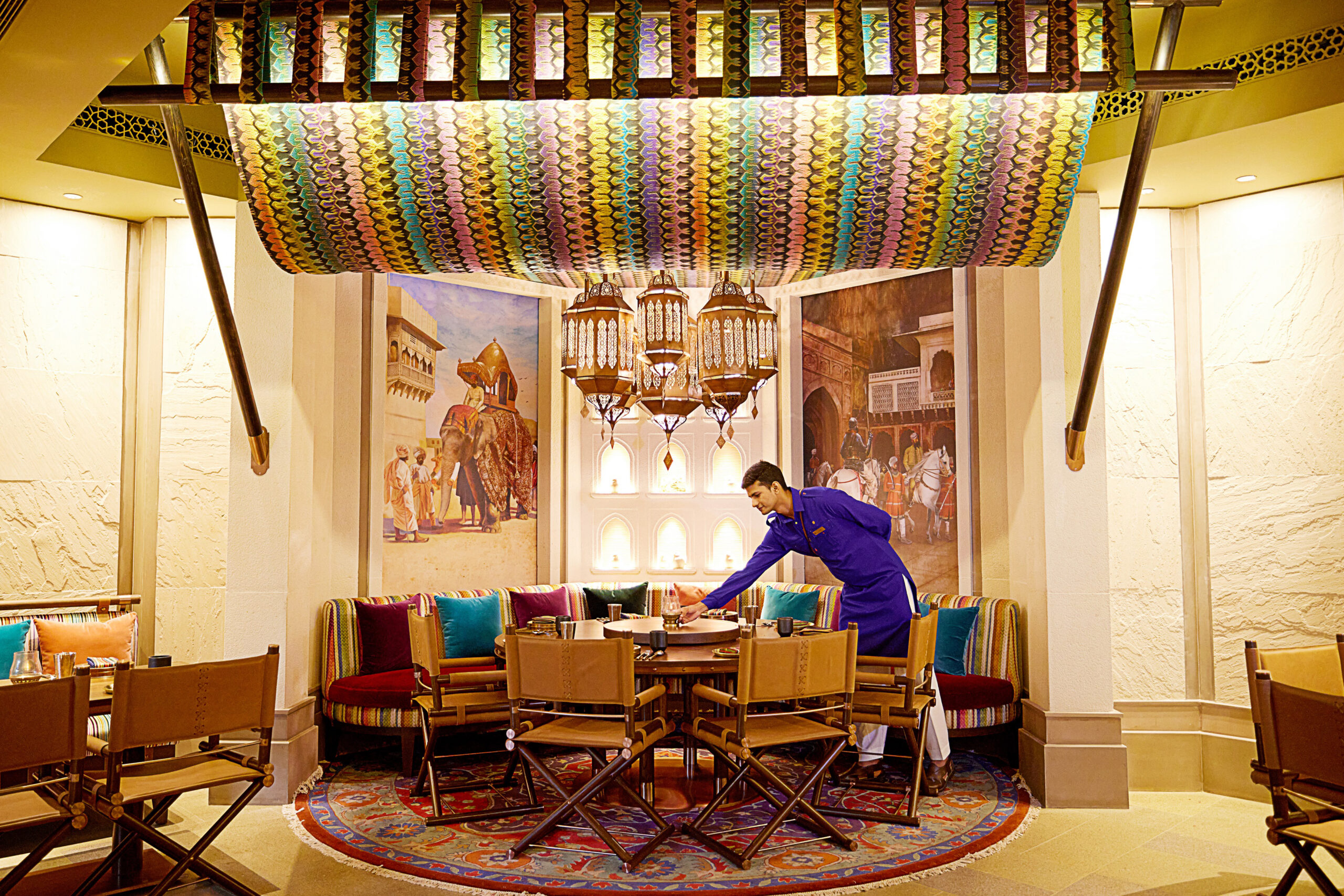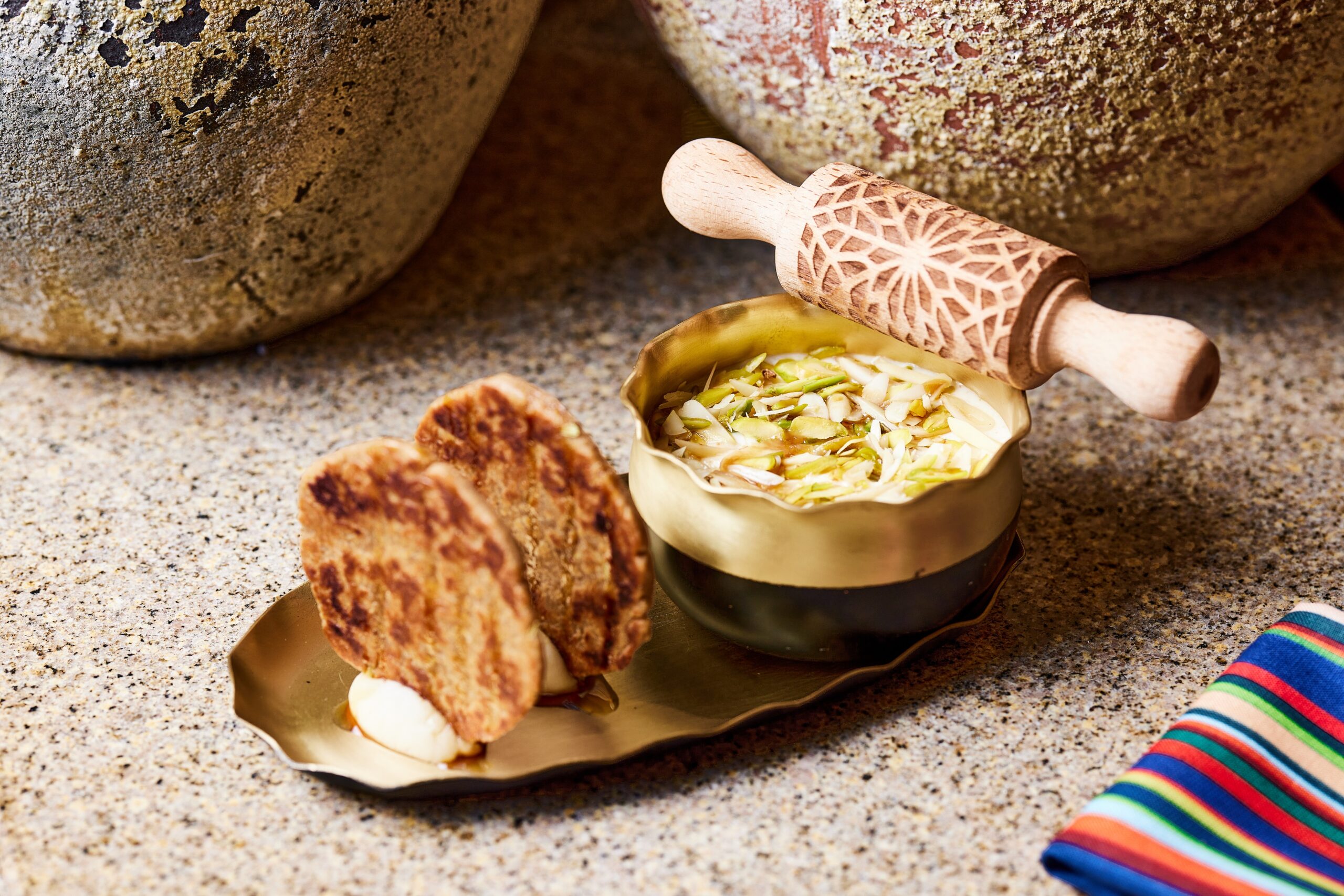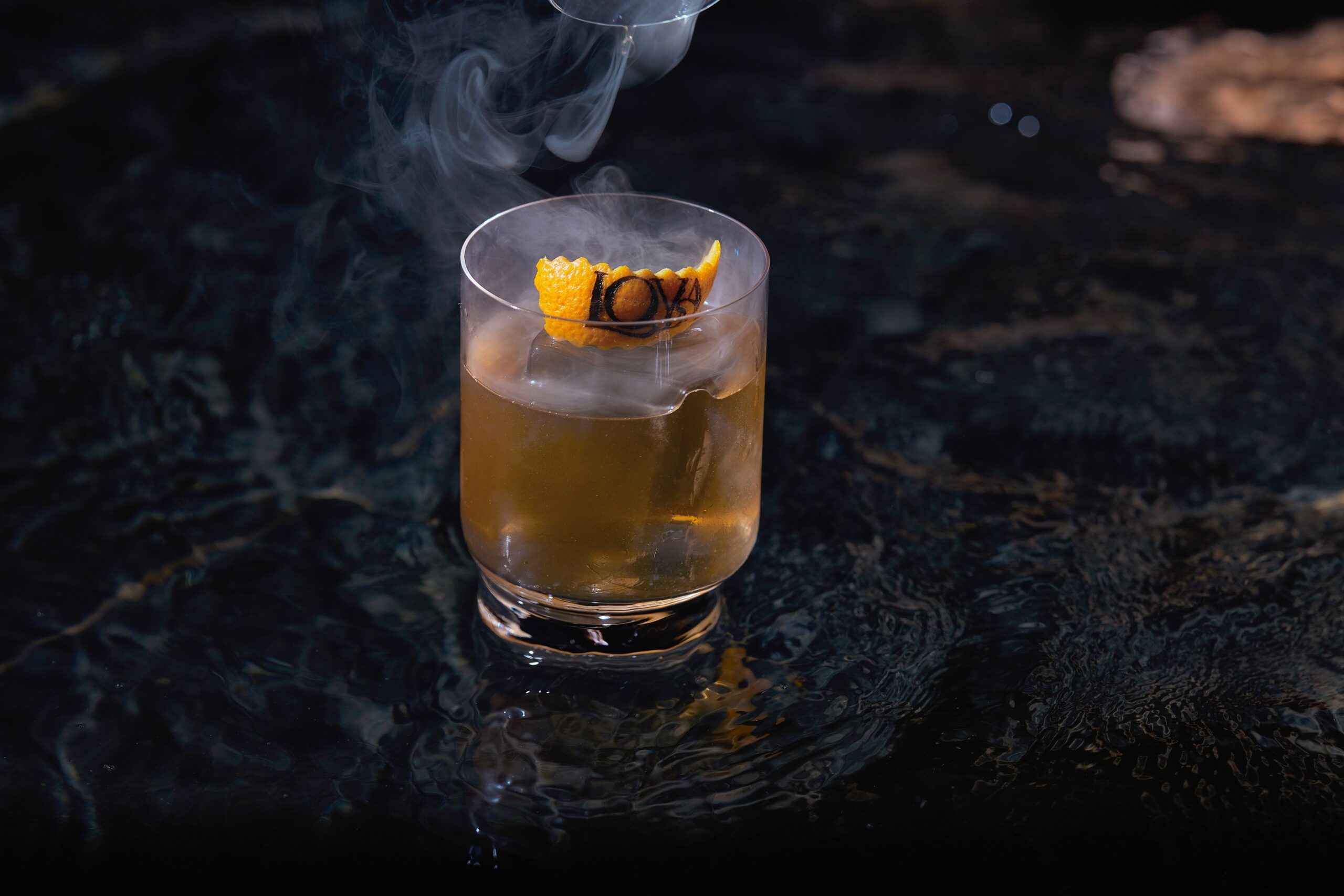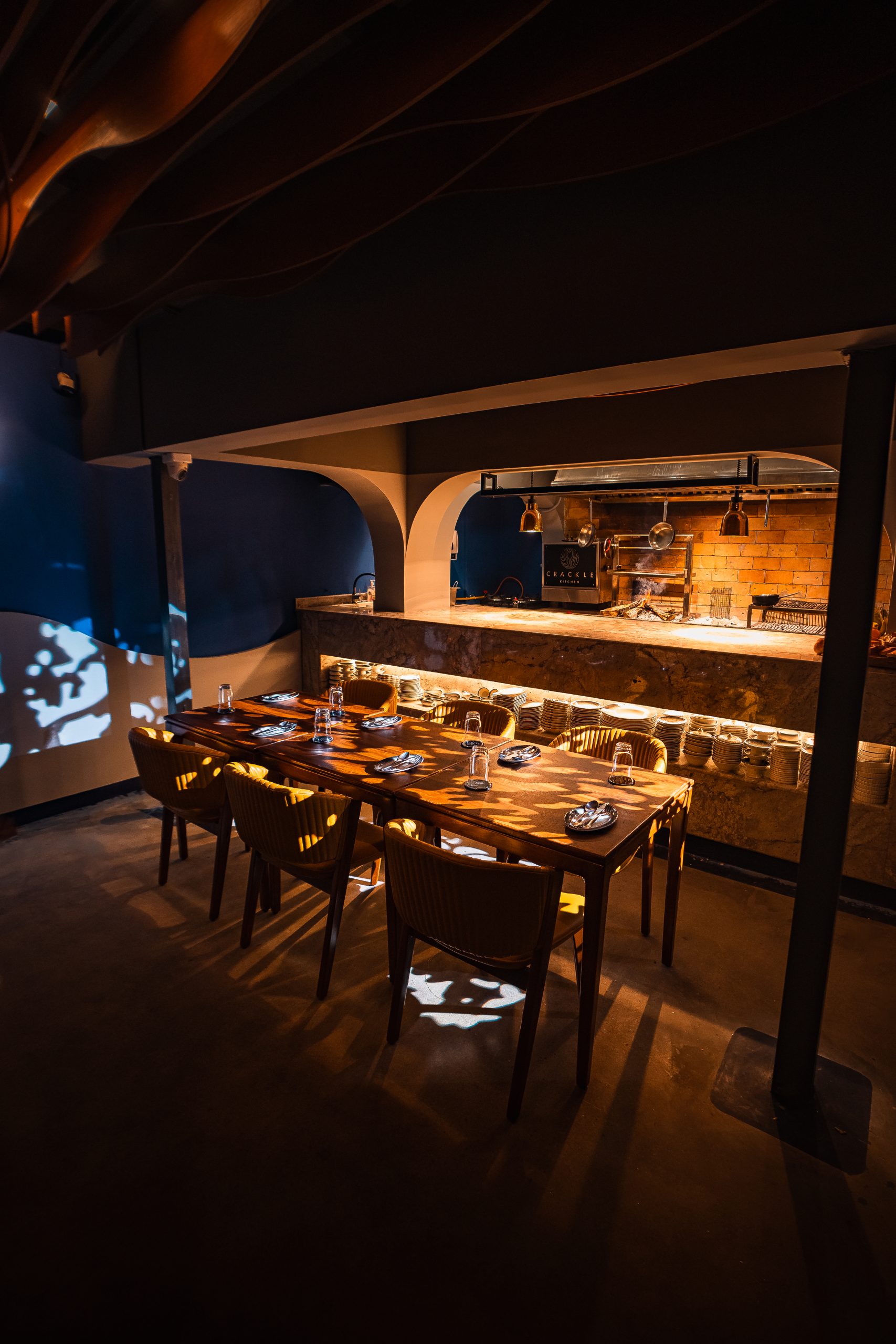A passion project that took eight years to research, perfect and launch, Loya, the flagship Indian concept restaurant at the Taj West End offers you a distillation of flavours ranging from the Himalayan foothills to the Gangetic plains.
Loya takes the truly epicurious on a culinary adventure that goes far beyond the standard North Indian kebabs and curries. They delve deep into long-forgotten cooking techniques and heirloom ingredients and bring them to the surface with flavour and finesse. The whole concept is a coming together of unique elements and lost culinary stories, from discovering old family recipes to researching the dishes of nomadic shepherd tribes like the Bakharwals. The name ‘Loya’ itself is inspired by the phrase Loya Jirga in Pashtun, which means a sumptuous feast hosted by tribal leaders after the long winter months and enjoyed by the community at large.
The minute detailing of the whole Loya concept is impressive. Starting with the mellow background music composed by Shreyas Patkar that is drawn from folk tunes and old music traditions, setting the tone right away.
Then there is the rustic-chic décor in vibrant satrangi stripes and motifs. The open kitchen where pahadi vessels are displayed and used. The embossed handmade steel and brass cutlery. The philgiri copper lanterns, graceful arches, Rajasthani jharokhas, and fine stone jalis, with earthy tones of the furniture, gleaming brassware and pops of vibrant colour harmonise nicely in the space that flows from intimate dining to garden alfresco.
A patterned rolling pin along shortbread- badaam kheer
The food menu crafted by Chef Rajesh Wadhwa is meticulously detailed. Traditional utensils like clay pots, coal sigdis, sil battas (mortars and pestles) and cast iron pans are used in conjunction with almost-forgotten cooking techniques and heirloom ingredients. Meats and veggies are slow-cooked on dum. Sizzling baghars finish the dish with a flourish of hot oil and spices as does the old dunghar method of using a sizzling nugget of coal to add a smokey, butteriness to some of the dishes.
Several indigenous ingredients like wild mustard seeds, black garlic, patthar ke phool (stone flower) and bhoot jolokia (one of the hottest chilli peppers in the world) are added for depth and flavour.
Some standout dishes from the menu for me were the Kachori chaat, a flavourful blend of dried green peas, and pomegranate seeds and the house-special chutney which is served live at your table as the perfect appetizer. Kathal baingan bartha, jackfruit and aubergine infused with the delicate smokiness of apple woodchips from Himachal Pradesh, Kangra khodiya gosht, a pahadi-special mutton curry, which is darkened with hand-ground charred walnut ink. Tender Mutton chapli kebab alongside a light flaky paratha. Timbri jhinga, marinated with shrub seeds and served with bhang jeera chutney.
Khatta gosht from Himachal Pradesh, dal Tadka from Punjab, and an unusual spinach saag enriched with dates and walnuts. Paneer Teen Mirch is richly flavoured with crushed black pepper, red and green chillis, and smoke-infused Ghost Chilli Murg Tikka with the fiery heat of Bhut Jolokia, masterfully tamed.
A patterned rolling pin is used to embellish Chef Rajesh’s grandmother’s shortbread- badaam kheer recipe to make Gud-Ki-Maan, a dessert that used to be a staple in North Indian homes. In the alfresco area, the iconic tamarind tree holds sway between the bar and the champagne lounge which, in turn, is dotted with charming water bodies, reminiscent of the gurgling Himalayan springs.
Masala Whiskey made using special homemade masala syrup
Loya’s bar menu, curated by New York-based mixologist Hemant Pathak, focuses on using local ingredients and spirits from the North of the country and is divided into five sections – Harmony, Experience, Authentic, Revered, and The Spirit, each offering an interesting desi version of the classics.
The hugely popular Masala Whiskey is Pathak’s take on the classic Old Fashioned, and is made using special homemade masala syrup, with eleven different ingredients, like bay leaf, nutmeg and pepper, and finished with a cloud of star anise smoke. Gin lovers would enjoy the Mulethi, a blend of liquorice-infused gin, and citrus and garnished with a black honeycomb tuile.
The Himalayan Negroni is an artful infusion of gin, Campari and timbur ( a kind of Sichuan pepper). The concentrates and infusions are made fresh in-house and are a virtual ode to the local geographies of the region.
Inside Loya, an amalgamation of colours.
The vibrant decor, the subtle hum of folk tunes, and the flickering light of copper lanterns linger in the memories of those who have experienced Loya. The tamarind tree, standing tall in the alfresco area, becomes a symbol of continuity—a connection between the past and the present, much like the carefully curated menu that bridges traditional and contemporary flavours.
As guests leave Loya, they carry with them more than just the satisfaction of a delicious meal. They carry the echoes of ancestral kitchens, the warmth of community feasts, and the thrill of culinary exploration. Loya, in its entirety, is not just a restaurant; it is a sanctuary of flavours, a living museum of culinary heritage, and a testament to the power of food to connect us to our roots.
Words by Jackie Pinto.
Image courtesy Loya.








